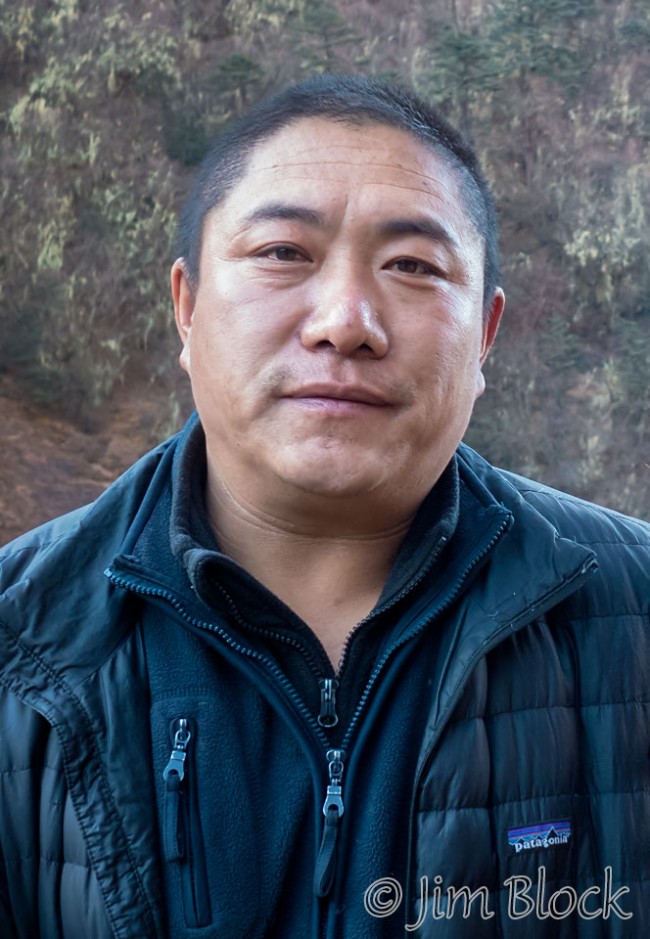
To say that Phub Tshering is a forester is a tremendous understatement. He is a naturalist; humanitarian; trek leader; advisor, counselor, and protector for nomads; discoverer of new species; and documenter of species in unbelievable places. He knows the people, animals, flora, and fauna of the Himalayan Mountains of northwestern Bhutan like few others. He was the first forester to photograph a snow leopard in Bhutan and also the first to capture movie footage of breeding tigers in the Himalayan Mountains of Bhutan. This provided the initial evidence of tigers living and breeding at elevation above 13,500 ft.
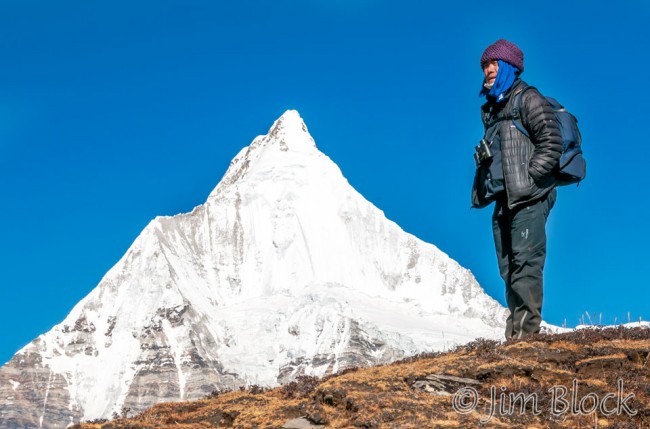
Beyond his knowledge of the mountains, his knowledge of the people living there and, in particular, his assistance to the nomads has been extraordinary. Because of his friendship with the nomads, we were able to visit one woman in her home seen here at over 13,000 ft and, later in our trek, stay overnight with a nomad family in their winter home in Soi Yaksa.
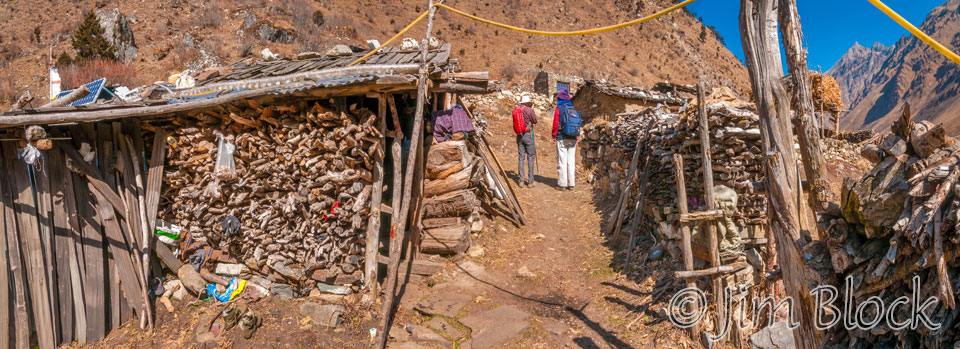
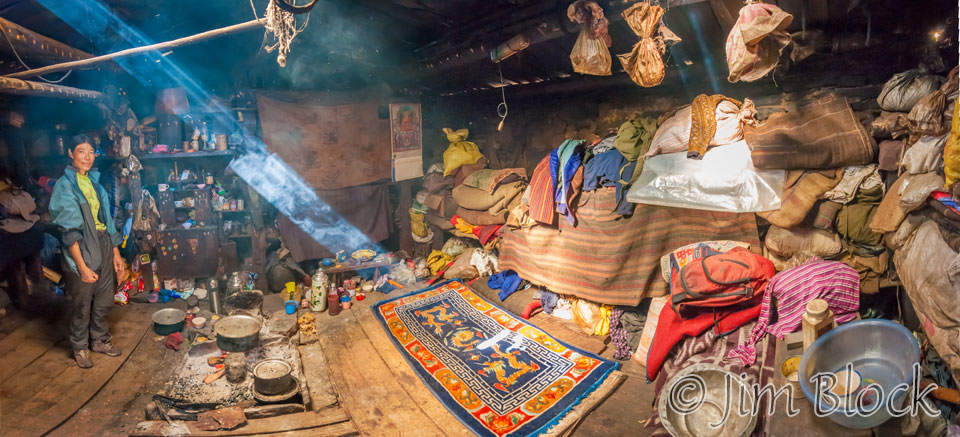
I found the nomads of this high mountain region very fascinating. They move from homes to huts throughout the year mostly tending their yaks as the animals graze in the huge Jigme Dorji National Park. They produce yak butter and cheese for sale. But Phub predicts their way of life will disappear in 10 to 15 years. All because of a very strange caterpillar.
The Cordyceps sinensis (Ophiocordyceps sinensis) is a fungus that grows from the caterpillar of a ghost moth. When a caterpillar ingests spores of the fungus, the fungus germinates in the living larva, kills and mummifies it, and then a stalk-like fruiting body emerges from the corpse. The fungus will grow to about the same length as the caterpillar or sometime much longer. The caterpillars in the photo below are about 1 inch long.
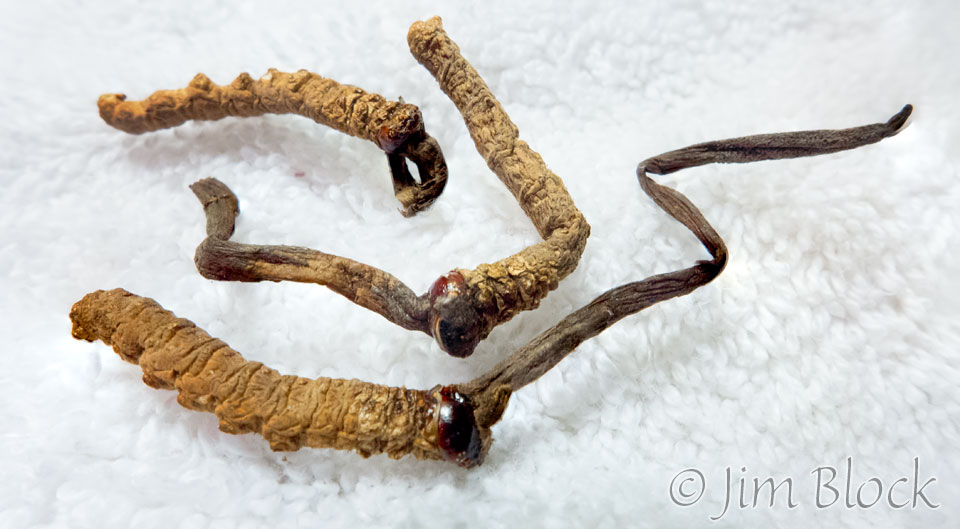
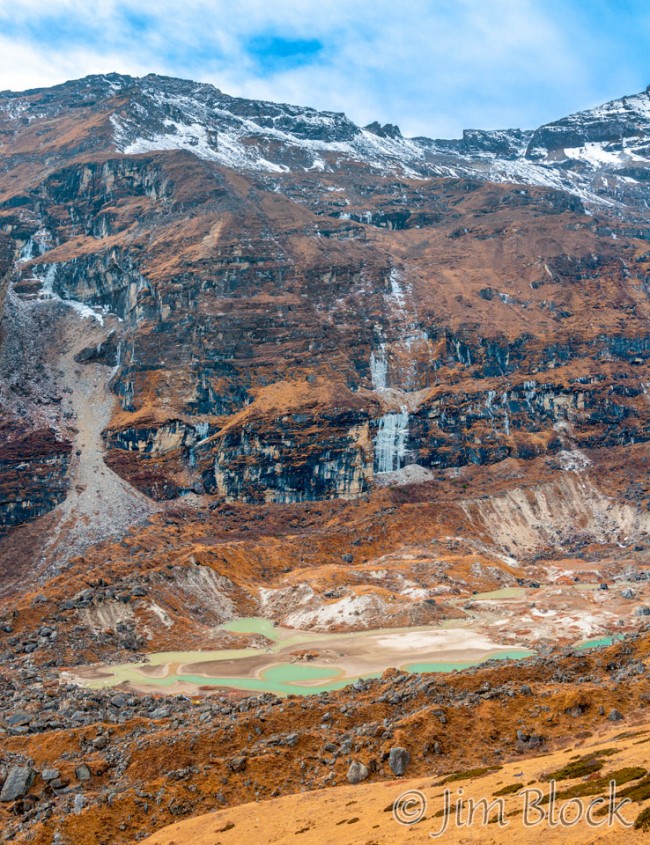
The cordyceps has been used in traditional Chinese and Tibetan medicine as a miraculous tonic for hundreds of years. In the 1990s China’s female track and field athletes smashed many of the world’s long-distance records. It turned out they had been given daily doses of cordyceps for months. Substances contained in the cordyceps were quickly put on the doping lists and the records annulled. Cordyceps remain in high demand – a high-quality kilogram can sell for well over $10,000. Phub helps prevent illegal harvesting of cordyceps including by people who cross the borders into Bhutan.
In recent years Bhutan has allowed the nomads to harvest the cordyceps in specific places at regulated times. Phub said that the steep slope in the photo on the right is one of the locations where the cordyceps can be found. Because of the high price that the cordyceps fetch, the nomads are becoming relatively wealthy. Phub believes this prosperity will cause an end of their way of life as they move down from the mountains and build permanent homes.
Below are a few more photos from our brief visit with a nomad on the second day of our Jomolhari Trek.














